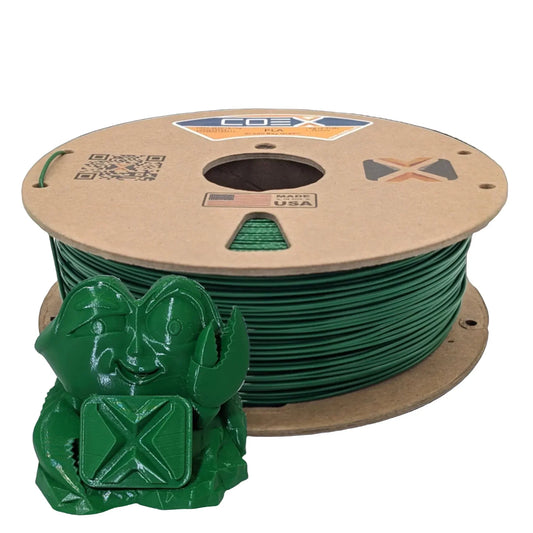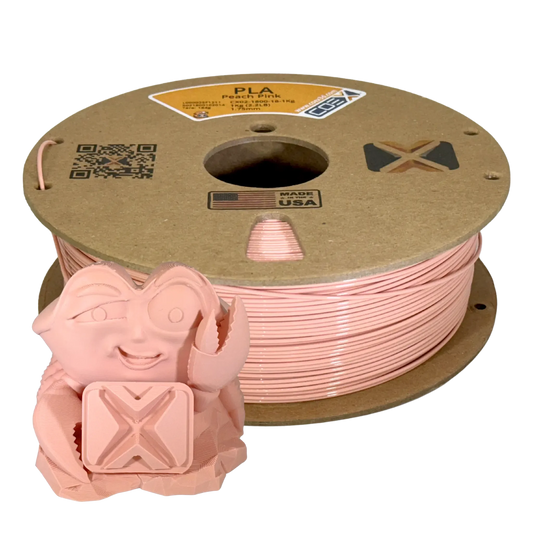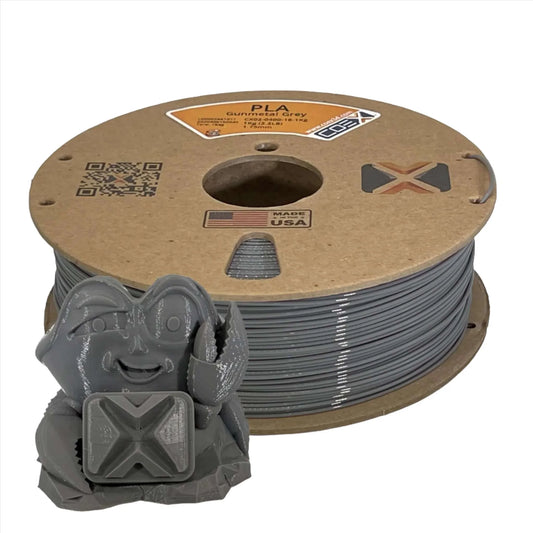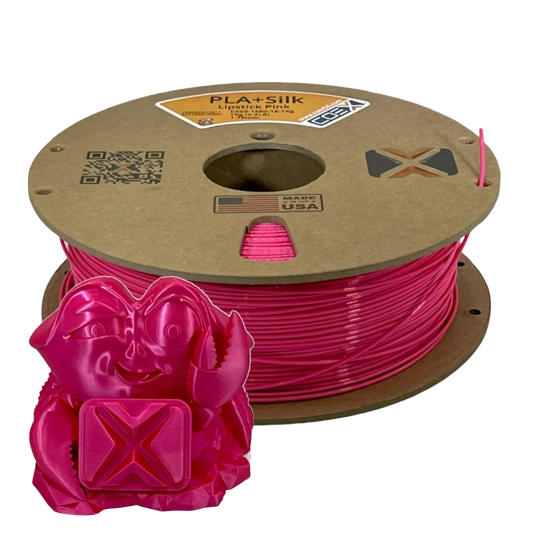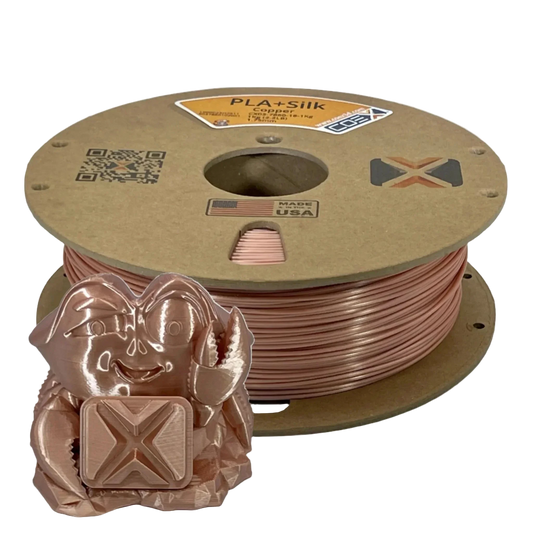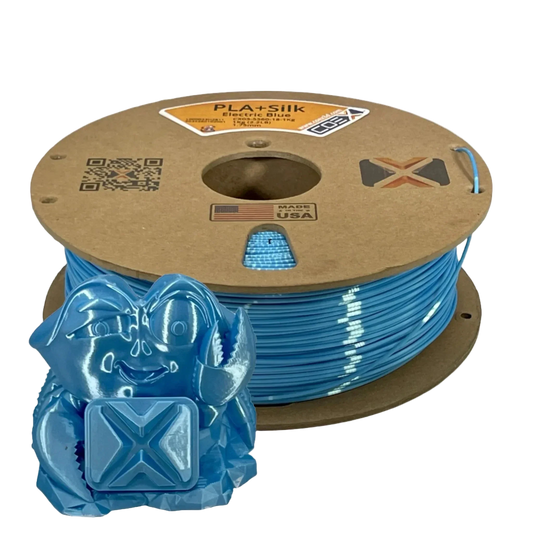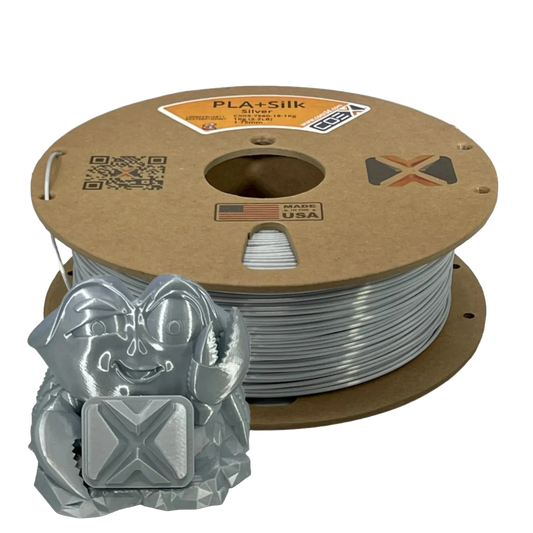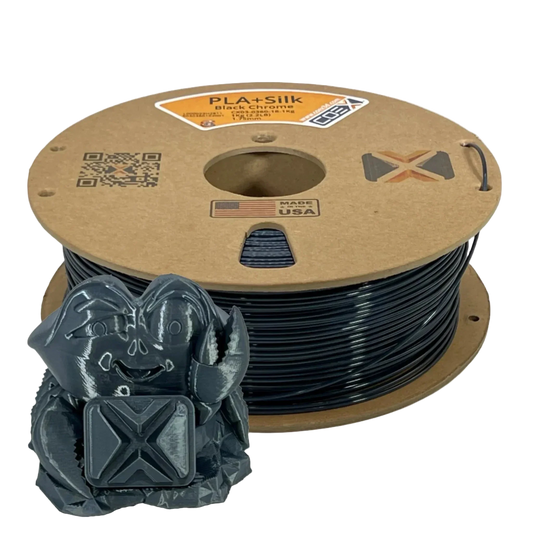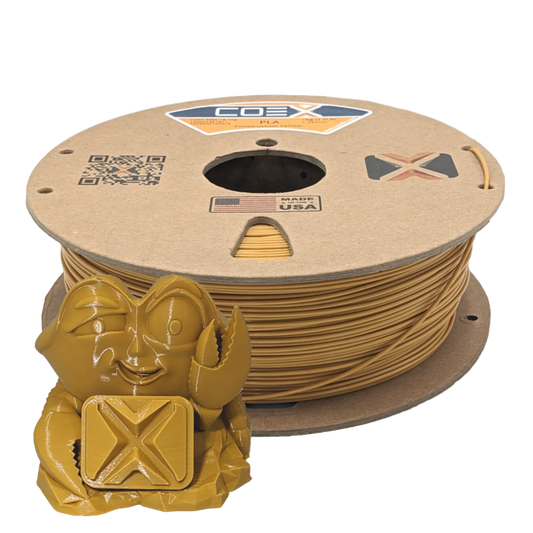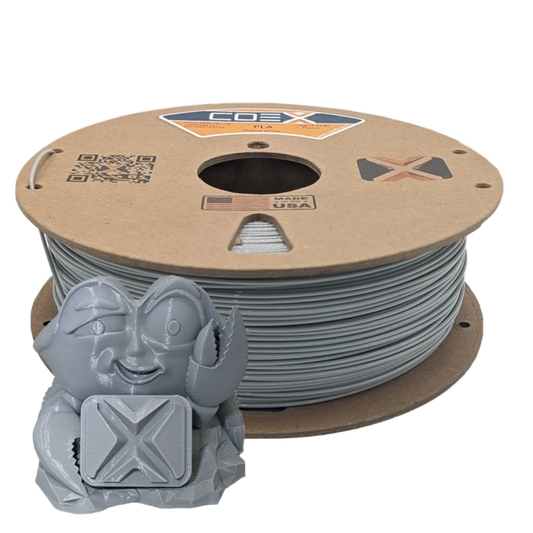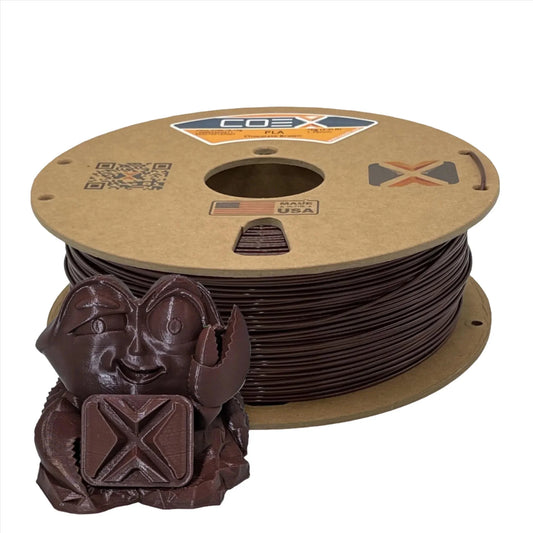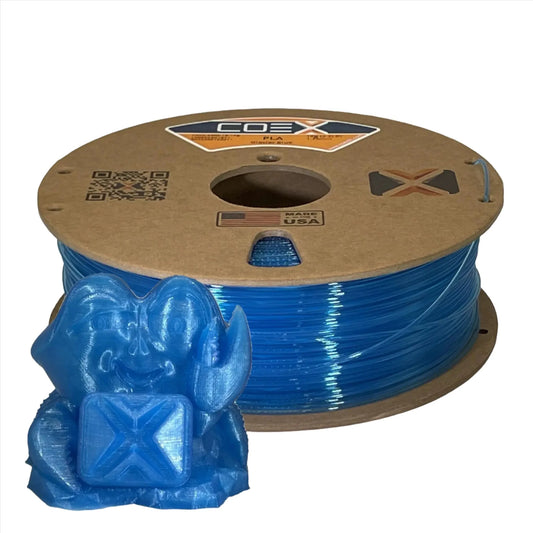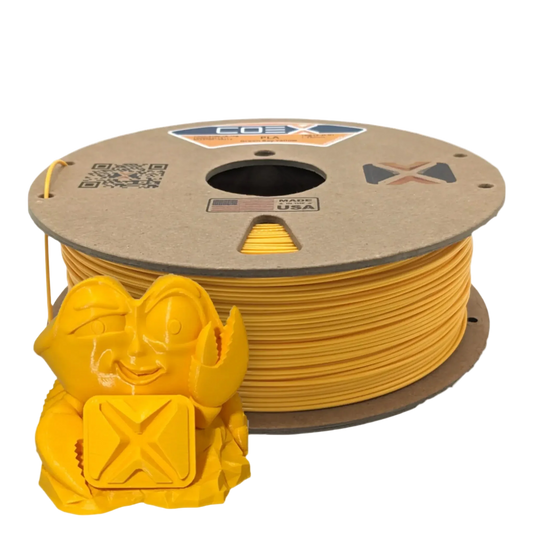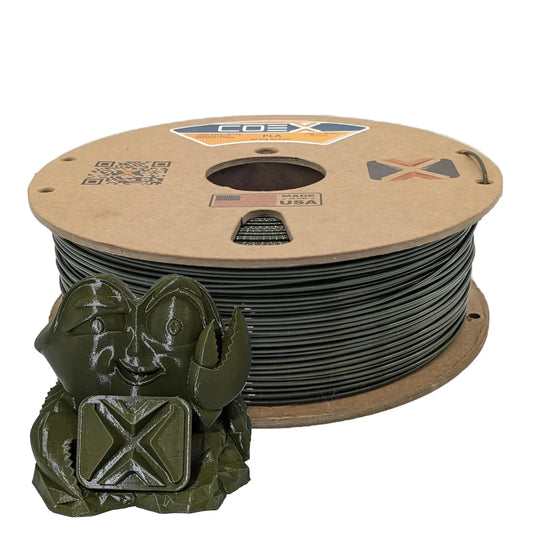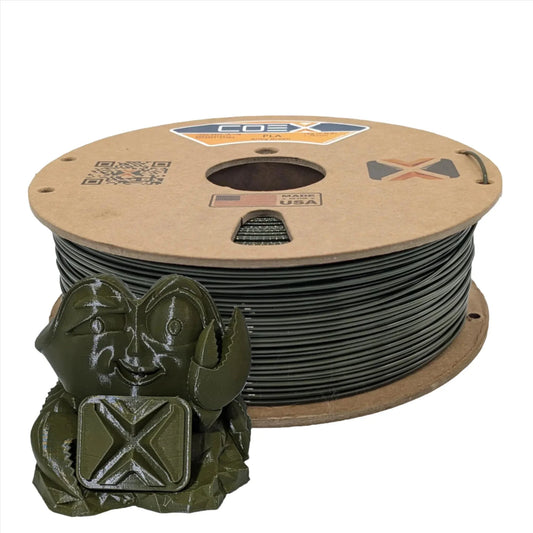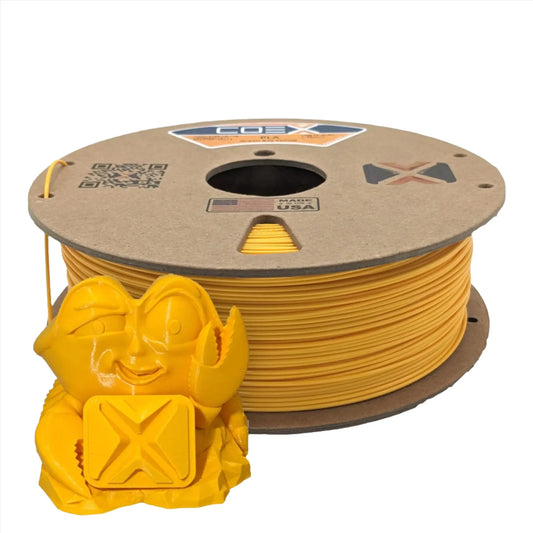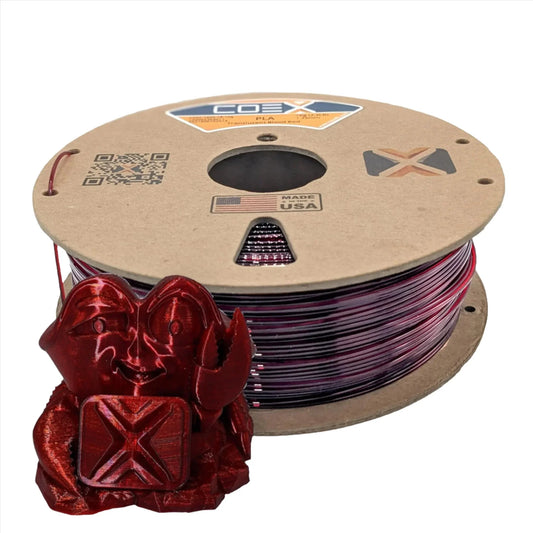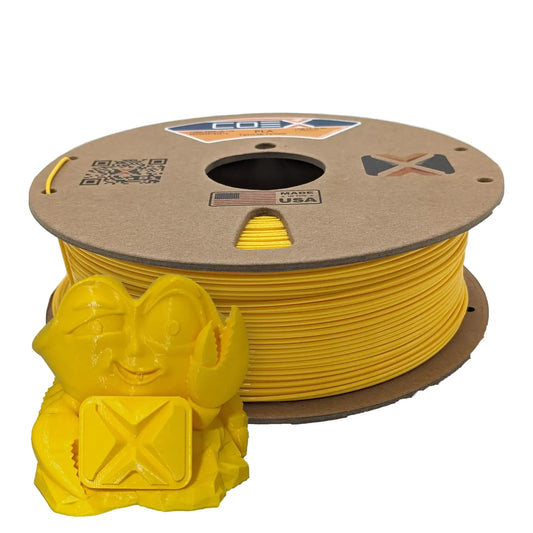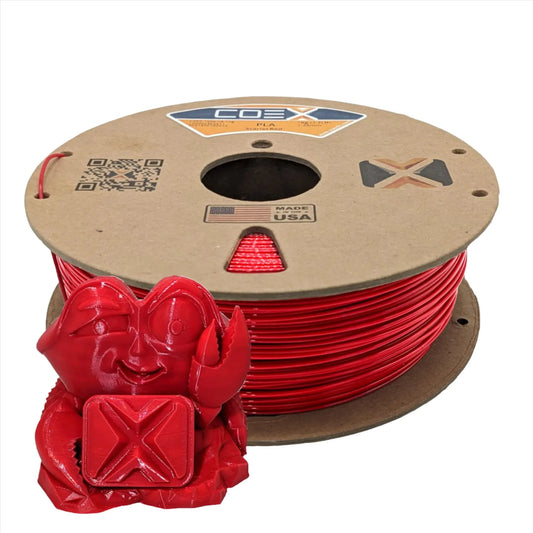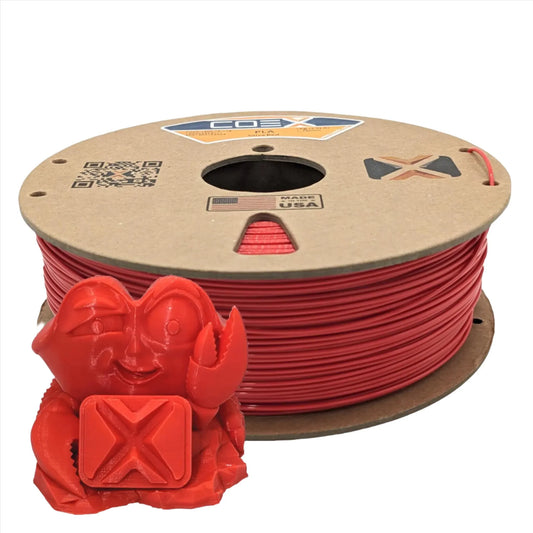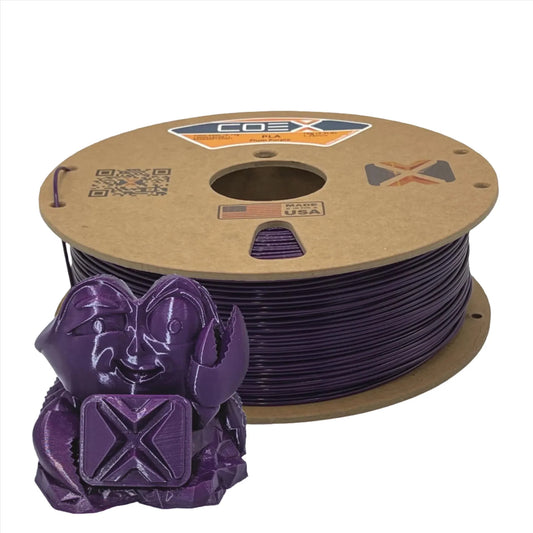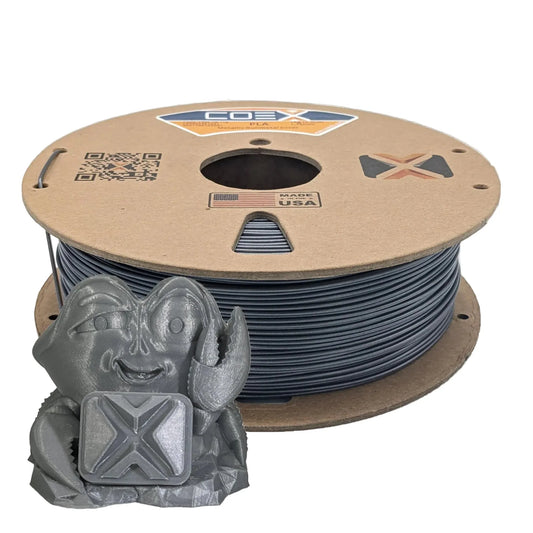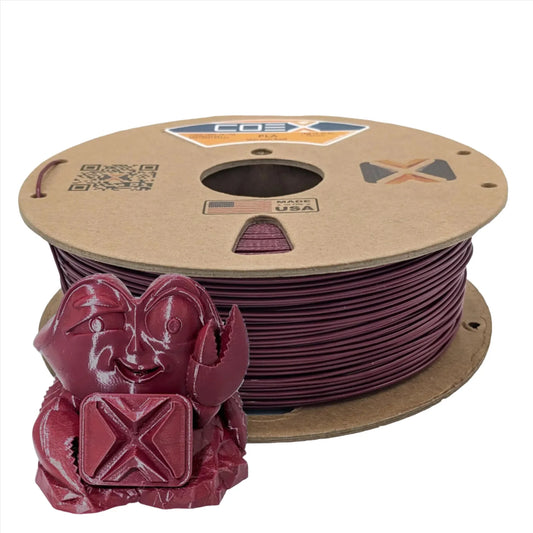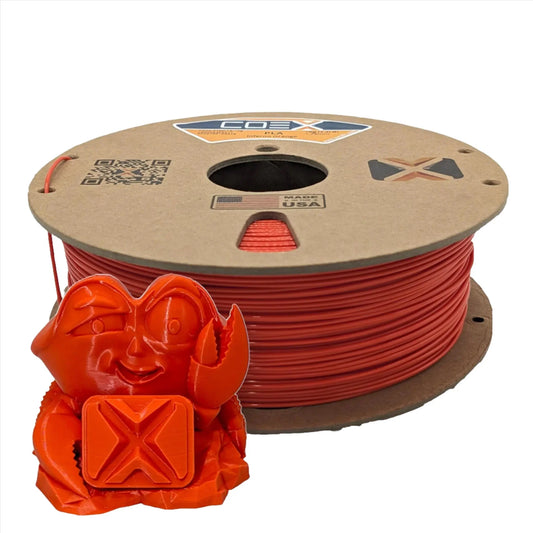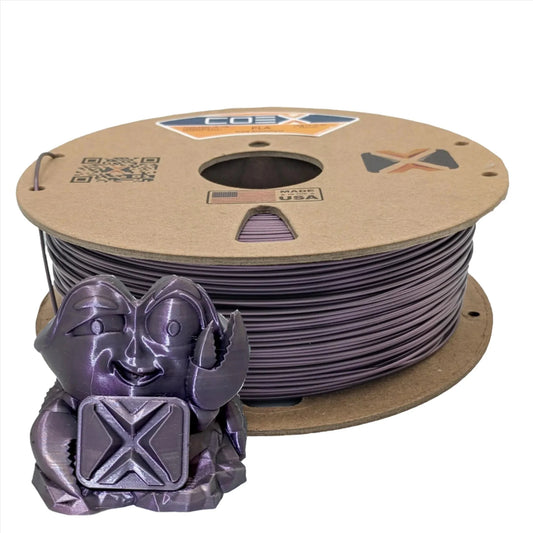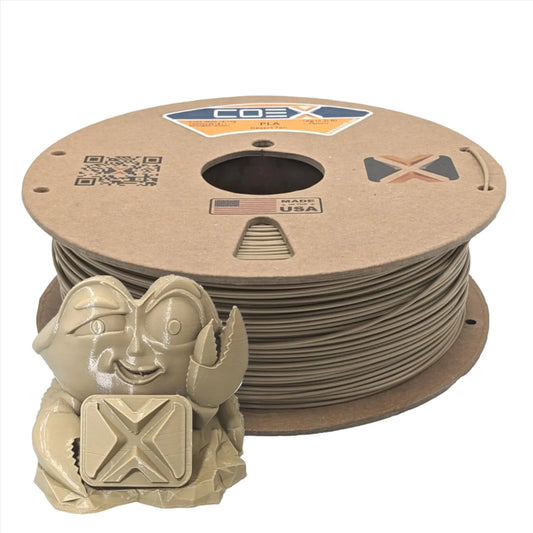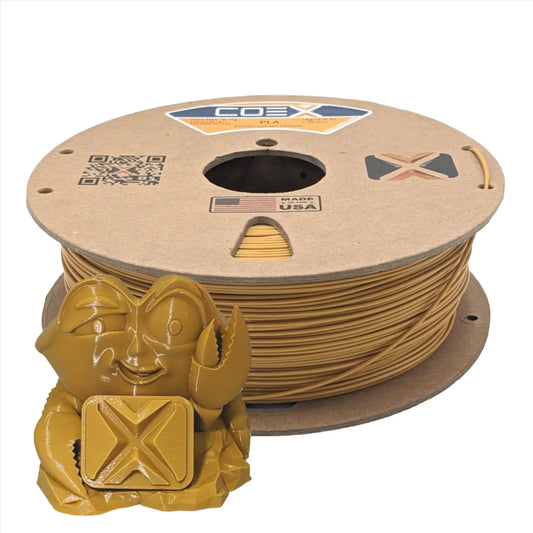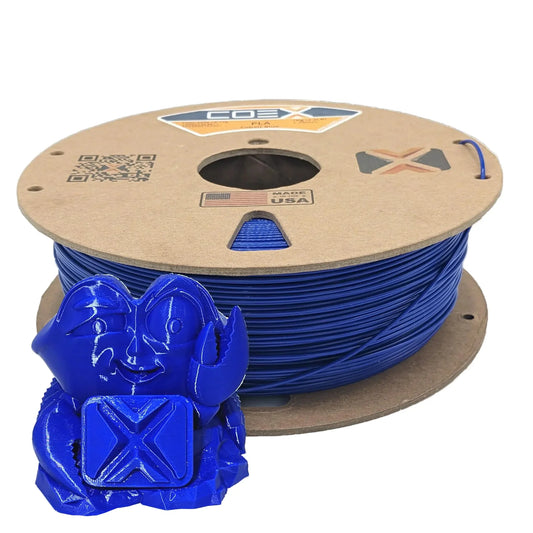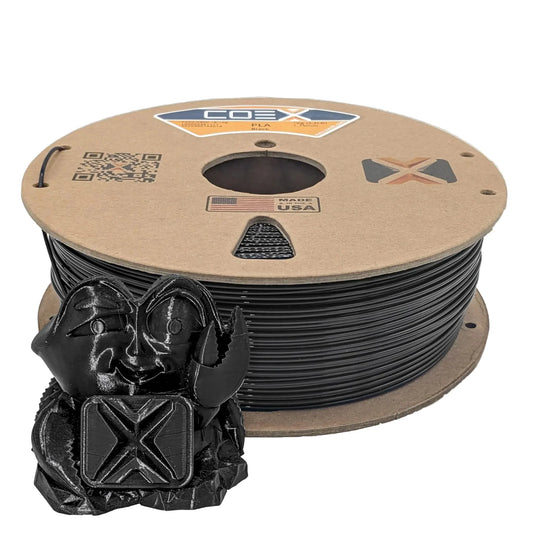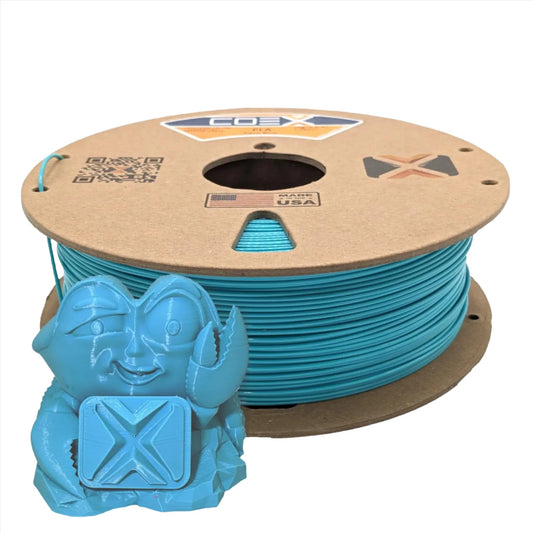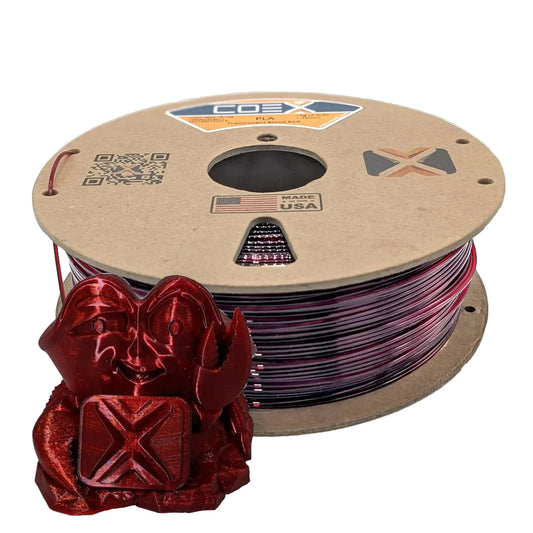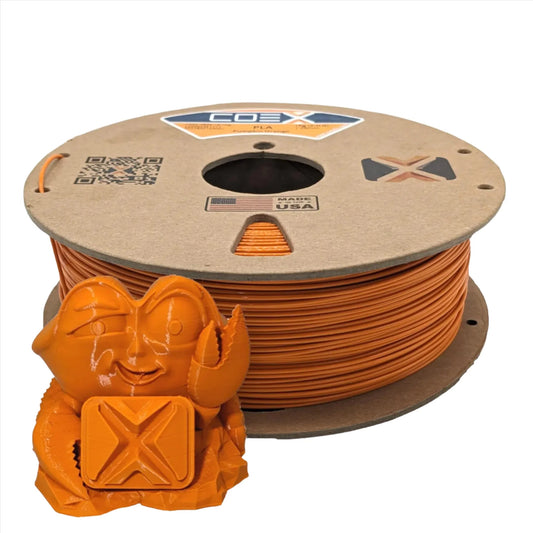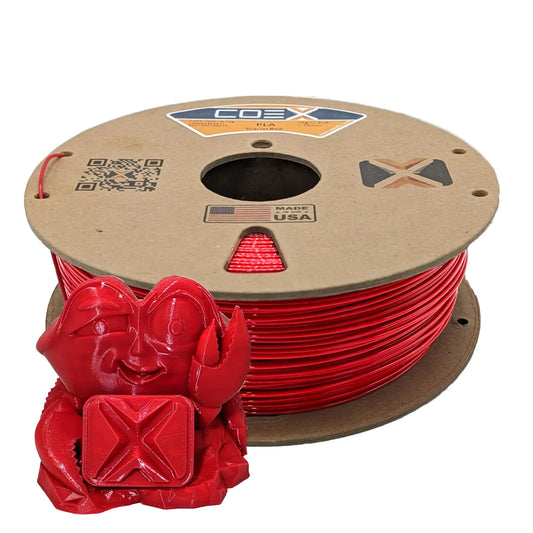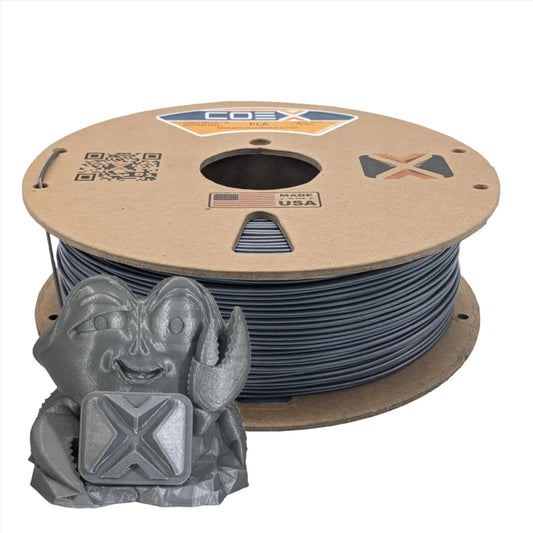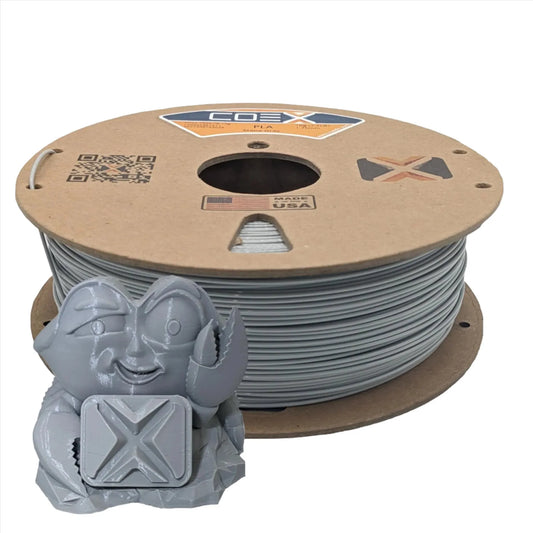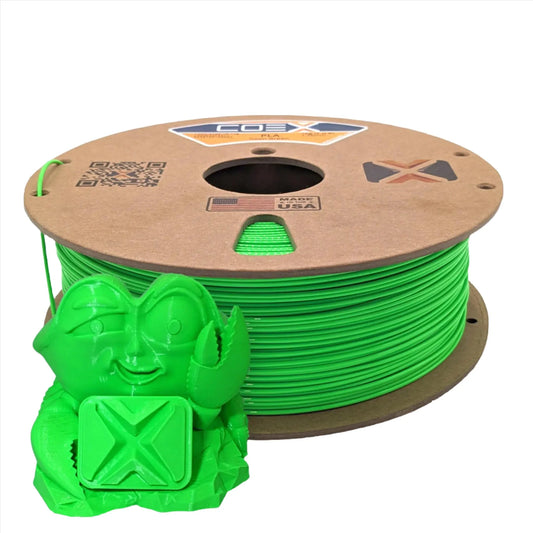Collection: PLA Filament

-
Green Bay Green PLA Prime
Regular price From $24.00 USDRegular price$24.00 USDSale price From $24.00 USD -
Peach Pink PLA
Regular price From $19.00 USDRegular price$19.00 USDSale price From $19.00 USD -
Gunmetal Gray PLA
Regular price From $19.00 USDRegular price$19.00 USDSale price From $19.00 USD -
Fog Gray PLA
Regular price From $19.00 USDRegular price$19.00 USDSale price From $19.00 USD -
Transition “Mystery” Color PLA+Silk
Regular price $21.00 USDRegular price$21.00 USDSale price $21.00 USD -
Lipstick Pink PLA+Silk
Regular price From $21.00 USDRegular price$21.00 USDSale price From $21.00 USD -
Copper PLA+Silk
Regular price From $21.00 USDRegular price$21.00 USDSale price From $21.00 USD -
Electric Blue PLA+Silk
Regular price From $21.00 USDRegular price$21.00 USDSale price From $21.00 USD -
Gold PLA+Silk
Regular price From $21.00 USDRegular price$21.00 USDSale price From $21.00 USD -
Silver PLA+Silk
Regular price From $21.00 USDRegular price$21.00 USDSale price From $21.00 USD -
Black Chrome PLA+Silk
Regular price From $21.00 USDRegular price$21.00 USDSale price From $21.00 USD -
Frost White PLA+Silk
Regular price From $21.00 USDRegular price$21.00 USDSale price From $21.00 USD -
Construction Yellow PLA Prime
Regular price From $32.00 USDRegular price$32.00 USDSale price From $32.00 USD -
Stone Gray PLA Prime
Regular price From $32.00 USDRegular price$32.00 USDSale price From $32.00 USD -
Chocolate Brown PLA
Regular price From $19.00 USDRegular price$19.00 USDSale price From $19.00 USD -
Glacier Blue PLA
Regular price From $19.00 USDRegular price$19.00 USDSale price From $19.00 USD -
Galaxy Blue PLA
Regular price From $19.00 USDRegular price$19.00 USDSale price From $19.00 USD -
PLA Color Sample Keyring
Regular price $20.00 USDRegular price$20.00 USDSale price $20.00 USD -
Green Bay Yellow PLA Prime
Regular price From $24.00 USDRegular price$24.00 USDSale price From $24.00 USD -
Lilac Purple PLA Prime
Regular price From $24.00 USDRegular price$24.00 USDSale price From $24.00 USD -
Army Green PLA Prime
Regular price $32.00 USDRegular price$32.00 USDSale price $32.00 USD -
Pumpkin Orange PLA Prime
Regular price From $32.00 USDRegular price$32.00 USDSale price From $32.00 USD -
Army Green PLA
Regular price From $19.00 USDRegular price$19.00 USDSale price From $19.00 USD -
Green Bay Yellow PLA
Regular price From $19.00 USDRegular price$19.00 USDSale price From $19.00 USD -
White PLA Prime
Regular price From $24.00 USDRegular price$24.00 USDSale price From $24.00 USD -
Translucent Blood Red PLA
Regular price From $19.00 USDRegular price$19.00 USDSale price From $19.00 USD -
Taxicab Yellow PLA Prime
Regular price From $32.00 USDRegular price$32.00 USDSale price From $32.00 USD -
Scarlet Red PLA
Regular price From $19.00 USDRegular price$19.00 USDSale price From $19.00 USD -
Salsa Red PLA
Regular price From $19.00 USDRegular price$19.00 USDSale price From $19.00 USD -
Plum Purple PLA
Regular price From $19.00 USDRegular price$19.00 USDSale price From $19.00 USD -
Olive Drab Green PLA
Regular price From $19.00 USDRegular price$19.00 USDSale price From $19.00 USD -
Ocean Blue PLA
Regular price From $19.00 USDRegular price$19.00 USDSale price From $19.00 USD -
Navy Blue PLA
Regular price From $19.00 USDRegular price$19.00 USDSale price From $19.00 USD -
Natural PLA Prime
Regular price From $24.00 USDRegular price$24.00 USDSale price From $24.00 USD -
Metallic Silver PLA Prime
Regular price $32.00 USDRegular price$32.00 USDSale price $32.00 USD -
Metallic Gunmetal Silver PLA Prime
Regular price From $24.00 USDRegular price$24.00 USDSale price From $24.00 USD -
Metallic Gunmetal Silver PLA
Regular price From $19.00 USDRegular price$19.00 USDSale price From $19.00 USD -
Maroon Red PLA
Regular price From $19.00 USDRegular price$19.00 USDSale price From $19.00 USD -
Lilac Purple PLA
Regular price From $19.00 USDRegular price$19.00 USDSale price From $19.00 USD -
Legion Gray PLA
Regular price From $19.00 USDRegular price$19.00 USDSale price From $19.00 USD -
Inferno Orange PLA
Regular price From $19.00 USDRegular price$19.00 USDSale price From $19.00 USD -
Iced Amethyst PLA
Regular price From $19.00 USDRegular price$19.00 USDSale price From $19.00 USD -
Green Bay Green PLA
Regular price From $19.00 USDRegular price$19.00 USDSale price From $19.00 USD -
Glow in the Dark Green PLA
Regular price From $19.00 USDRegular price$19.00 USDSale price From $19.00 USD -
Gamer Green (Chartreuse) PLA
Regular price From $19.00 USDRegular price$19.00 USDSale price From $19.00 USD -
Desert Tan PLA Prime
Regular price $32.00 USDRegular price$32.00 USDSale price $32.00 USD -
Desert Tan PLA
Regular price From $19.00 USDRegular price$19.00 USDSale price From $19.00 USD -
Construction Yellow PLA
Regular price From $19.00 USDRegular price$19.00 USDSale price From $19.00 USD -
Cobalt Blue PLA Prime
Regular price From $24.00 USDRegular price$24.00 USDSale price From $24.00 USD -
Cobalt Blue PLA
Regular price From $19.00 USDRegular price$19.00 USDSale price From $19.00 USD -
Bone Brown PLA
Regular price From $19.00 USDRegular price$19.00 USDSale price From $19.00 USD -
Black PLA Prime
Regular price From $24.00 USDRegular price$24.00 USDSale price From $24.00 USD -
Aqua Blue PLA
Regular price From $19.00 USDRegular price$19.00 USDSale price From $19.00 USD -
Translucent Blood Red PLA Prime
Regular price From $24.00 USDRegular price$24.00 USDSale price From $24.00 USD -
Transition “Mystery” Color PLA Prime
Regular price From $24.00 USDRegular price$24.00 USDSale price From $24.00 USD -
Pumpkin Orange PLA
Regular price From $19.00 USDRegular price$19.00 USDSale price From $19.00 USD -
Transition “Mystery” Color PLA
Regular price From $19.00 USDRegular price$19.00 USDSale price From $19.00 USD -
Scarlet Red PLA Prime
Regular price From $24.00 USDRegular price$24.00 USDSale price From $24.00 USD -
Metallic Silver PLA
Regular price From $19.00 USDRegular price$19.00 USDSale price From $19.00 USD -
Stone Gray PLA
Regular price From $19.00 USDRegular price$19.00 USDSale price From $19.00 USD -
Neon Green PLA
Regular price From $19.00 USDRegular price$19.00 USDSale price From $19.00 USD -
Taxicab Yellow PLA
Regular price From $19.00 USDRegular price$19.00 USDSale price From $19.00 USD -
Magenta Pink PLA
Regular price From $19.00 USDRegular price$19.00 USDSale price From $19.00 USD
Subscribe to our emails
Subscribe and get 15% off your first order.
Be the first to know about new collections and exclusive offers.
Learn about COEX 3D's Printing Filament
Our Resins
Our resins are sourced from suppliers committed to high quality standards. Our partnerships with these suppliers ensures we maintain quality and consistent filament batch after batch. We only use prime virgin resins, colorants and processing additives to ensure reliability.
Our Grades of Materials
We believe in our filament so much, we often tell customers to start with our base filaments and compare them to the other makers higher grade filament. But we didn't stop with a great base grade, we also offer Prime in our PLA and ABS lineup. Prime is a more refined resin which improves print quality and strength.
Our Quality Control
We quality control the entire process of our filament. Starting with an incoming inspection process, we verify the resin is the quality we expect. Precise temperatures are monitored during extrusion. Laser measuring ensures our filament is held within a .03 tolerance. Final visual inspection for color and quality ensure you are receiving our best product.
Our Facility
Our climate controlled factory ensures dry material throughout the filament making process. Once the filament is spooled, each roll is vacuum sealed with desiccant inside the bag to prevent moisture. More hygroscopic materials go through an additional drying process in both the raw resin and then again once spooled, before being vacuum sealed
Our Process
We use industrial-grade extruders which melt and mix our resins with colorant, which is precisely fed at a consistent rate, via gravimetric color feeders.
Once melted and uniformly mixed, the resin is pushed through a heated die and fed into a warm water bath, which quickly cools the filament.
An industrial filament puller maintains the filament diameter, by speeding up or slowing down, based on readings it receives from the laser measuring head. The laser measuring head not only measures the diameter, but also the ovality, or in our case, lack thereof.
Our winding machines then spool up the filament with a traverse feeder, which ensures an even flat winding. This also ensures that it cannot overlap filament and cause a tangle.
Our finished spools are post-dried in our walk-in oven and then immediately vacuums sealed with a desiccant pack to ensure you receive dry filament.



